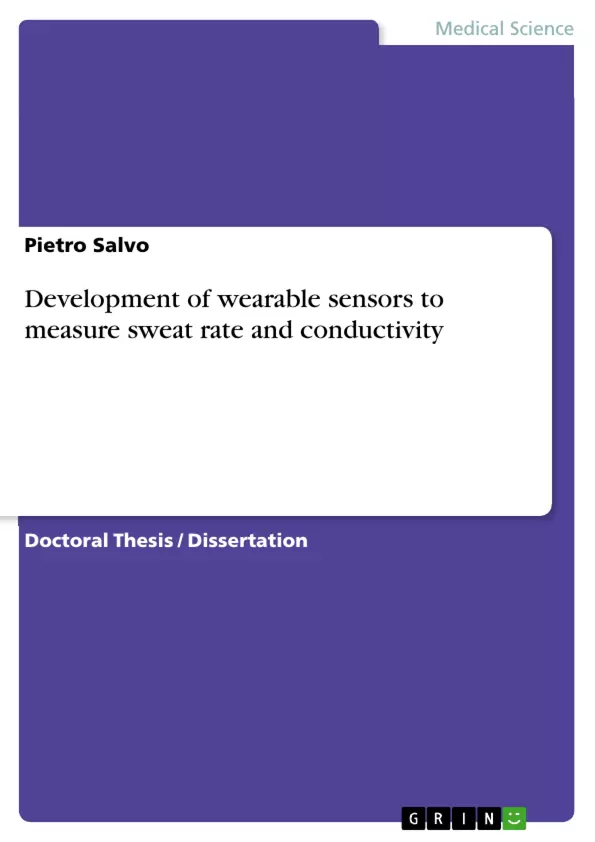Wearable sensors present a new frontier in the development of monitoring techniques. They are of great importance in sectors such as sport and healthcare as they permit the continuous monitoring of physiological and biological elements such as ECG and human sweat. Until recently this could only be carried out in specialized laboratories in the presence of cumbersome and often expensive devices. Sweat monitoring sensors integrated onto textile substrates are not only part of a new field of work but they also represent the first attempt to implement such an innovative idea on a system which will be worn directly on the body. The purpose of this dissertation is to present the design and creation of low cost, wearable, sweat rate and conductivity sensors integrated onto a textile.
Inhaltsverzeichnis (Table of Contents)
- Introduction
- Chapter 1 - Wearable sensors
- BIOTEX project
- Sweat
- Applications and sensors requirements
- Market innovation analysis and level of innovation
- References
- Chapter 2 – Sweat conductivity and temperature sensors
- Definition and preliminary tests
- Geometry and substrate of electrodes
- Temperature sensor
- Conductivity and temperature sensors
- References
- Chapter 3 - Sweat rate sensor
- Measurement of flow
- Humidity sensors
- Resistive humidity sensors
- Thermal conductivity humidity sensors
- Capacitive humidity sensors
- Wearable humidity sensors
- Sensors based on conductive yarns coated with hydrophilic polymers
- Sensors based on conductive polymer fibres
- Sensors based on a layer of hydrophilic polymer between conductive fabrics
- Test system
- Test of the sweat rate sensor
- References
- Chapter 4 - Calibration of the sensors and results
- Calibration of the sensors
- Choice of body area for sweat sampling
- Results
- Quote paper
- Dr. Ir. Pietro Salvo (Author), 2009, Development of wearable sensors to measure sweat rate and conductivity, Munich, GRIN Verlag, https://www.grin.com/document/199721



